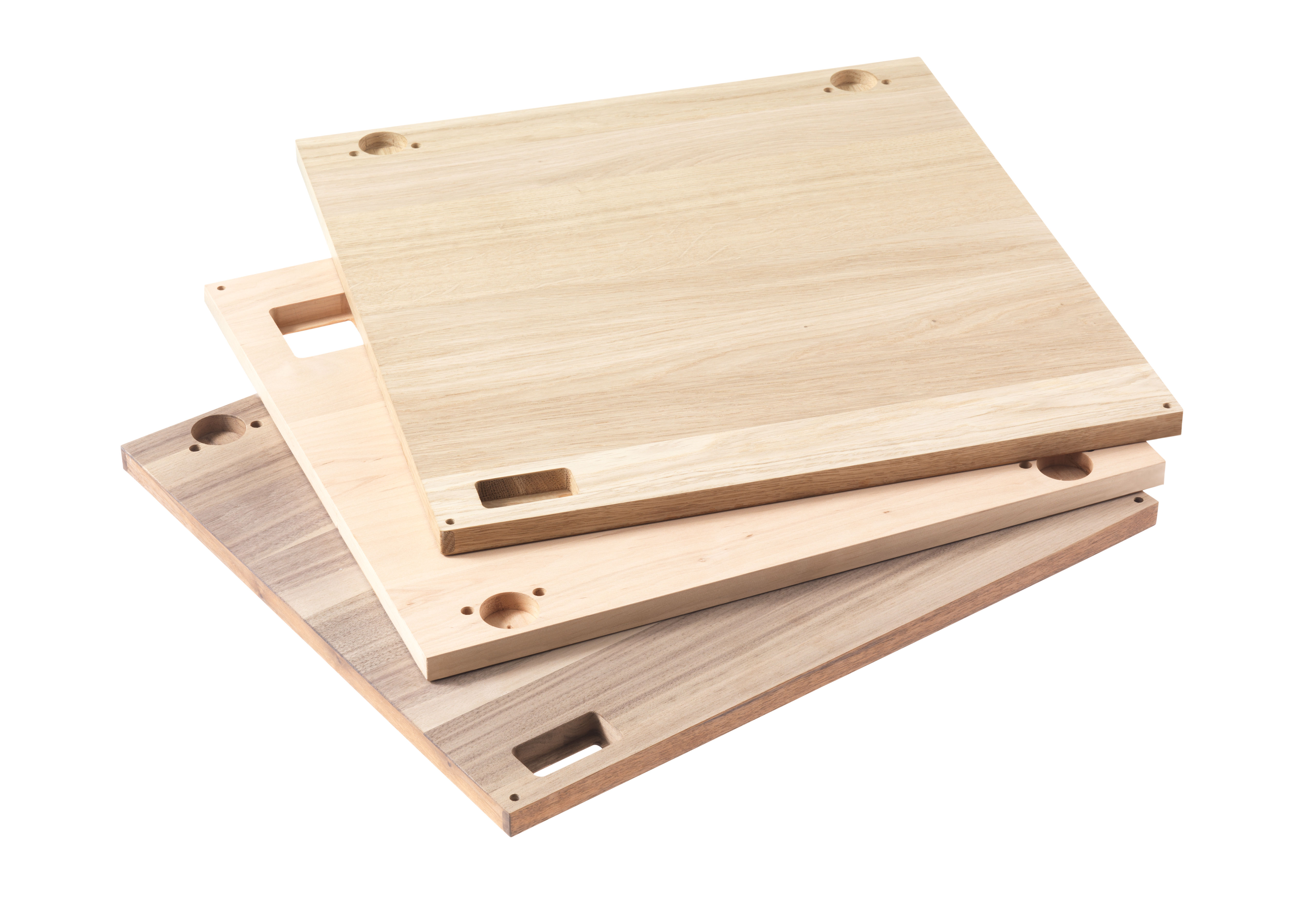

Dimensional accuracy and fine surfaces also play an important role when sanding chipboard, MDF, joinery and plywood boards. Especially during subsequent coating with laminates or films, the surface must be perfectly sanded. In addition, there are special requirements for the high performance and functional reliability of the calibration machines in order to process the high production volumes in the panel industry. Heesemann sanding machines take this into account. They combine modern technology and performance reserves
The required surface qualities of solid wood are now equivalent to those of veneered parts. As a result, the requirements for calibration sanding machines in the furniture and panel industry have been extended from the mere dimensional accuracy of the parts towards high surface quality. When planing and calibrating glued wood panels, solid wood frames and parquet products, Heesemann calibrating machines have important technical advantages.
The knife shaft head can be used for high chip acceptance. Even with glued and solid wood boards and up to 4 mm removal when fully covered, it is possible to remove the separated chips by suction through the extraction channels.
The quality of the knife wave block guarantees optimum surface quality. This is achieved by the pulling cut of the reversible blades in the knife shaft. Calibration can then be carried out much more easily and even a final sanding with pressure beam units can be carried out on the same machine.
The torsion-resistant suspension of the units, combined with robust and precise NC-controlled height adjustment, ensures dimensionally stable parts over the entire life of the machine.
A steel roller which, due to its virtually immeasurable wear and precision bearing, achieves an aggressive sanding attack with maximum accuracy. High motor outputs of up to 75 kW for high material degradation. A segmented pressure lip in the inlet of the calibrating roller in order to press intensively on workpieces of different thicknesses, even when loaded with multiple tracks.
The cross sanding technology used in the following fine sanding units avoids washing out effects on softwoods with annual rings of different hardnesses and sands branch inclusions with different material hardness flat. As a result of the aggressive sanding action of the transverse belt, a larger grain gap between rollers and transverse sanding unit is possible.
The CSD® magnetic pressure bar technology, which, with the continuous pressure regulation of each pressure element, excludes the edges on the calibrated surfaces from rounding off. Effective and economical belt cleaning and extraction, which also handles large amounts of dust.